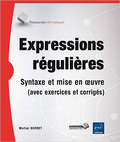Unix |
Unix v6 |
|
 |
getty(8) |
 |
getty set typewriter mode [ char ] is invoked by (VIII)
immediately after a typewriter is opened following a
dial-up. It reads the user’s name and invokes the
command (I) with the name as argument. While reading the
name attempts to adapt the system to the speed and type of
terminal being used. calls with an argument specified by the
file entry for the typewriter line. Arguments other than
‘0’ can be used to make treat the line
specially. Normally, it sets the speed of the interface to
300 baud, specifies that raw mode is to be used (break on
every character), that echo is to be suppressed, and either
parity allowed. It types the
‘‘login:’’ message, which includes
the characters which put the Terminet 300 terminal into
full-duplex and return the GSI terminal to non-graphic mode.
Then the user’s name is read, a character at a time.
If a null character is received, it is assumed to be the
result of the user pushing the
‘‘break’’
(‘‘interrupt’’) key. The speed is
then changed to 150 baud and the
‘‘login:’’ is typed again, this time
including the character sequence which puts a Teletype 37
into full-duplex. If a subsequent null character is
received, the speed is changed back to 300 baud. The
user’s name is terminated by a new-line or
carriage-return character. The latter results in the system
being set to treat carriage returns appropriately (see
(II)). The user’s name is scanned to see if it
contains any lower-case alphabetic characters; if not, and
if the name is nonempty, the system is told to map any
future upper-case characters into the corresponding
lower-case characters. Finally, login is called with the
user’s name as argument. init (VIII), login (I), stty
(II), ttys (V)
 |
getty(8) |
 |





